Tate Britain’s Now You See Us could be the most important exhibition you’ll ever see. Spanning 400 hundred years, this overview of women artists in Britain destroys the myth that female talent is an exotic anomaly.
We were led to believe there’d been no great women artists until, searching the archives, female art historians were able to reveal the genius of Artemisia Gentileschi whose Self-Portrait as the Allegory of Painting (La Pittura), c.1638-1639 (pictured below right) kicks off this brilliant survey.
How I wish I’d known of this powerful painting when I was a student at the Slade! It would have helped me refute the lie that female artists had never produced anything meaningful. We students were being primed for failure so no wonder most of us gave up trying to be painters and, instead, nurtured other people’s talents rather than our own.
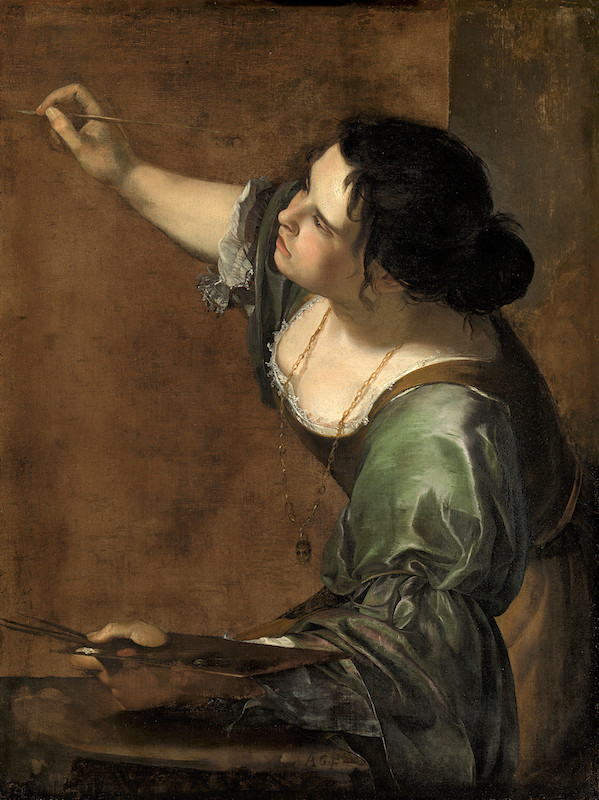 The discovery of Gentileschi as a 17th century super star still allowed her to be portrayed as unique – the exception that proved the rule. No longer, though. By including 100 artists Now You See Us demonstrates how women have repeatedly circumvented the barriers designed to frustrate any hope of realising their full potential.
The discovery of Gentileschi as a 17th century super star still allowed her to be portrayed as unique – the exception that proved the rule. No longer, though. By including 100 artists Now You See Us demonstrates how women have repeatedly circumvented the barriers designed to frustrate any hope of realising their full potential.
The curator Tabitha Barber deserves a medal for putting together an exhibition that proves, beyond doubt, the ongoing presence of women in the art world, over the centuries.
They pursued full time careers, were commissioned by royalty, enjoyed critical acclaim and gained international reputations, ran successful portrait studios, set up their own societies and opened their own art schools – despite vigorous attempts by the male establishment to thwart them at every turn.
The resulting experience is somewhat overwhelming, because the work is of such high quality and also because those on show represent the tip of the iceberg, the few rescued from oblivion. So much work has been destroyed, lost, dumped in basements or assigned to male colleagues that some artists are known only through the records.
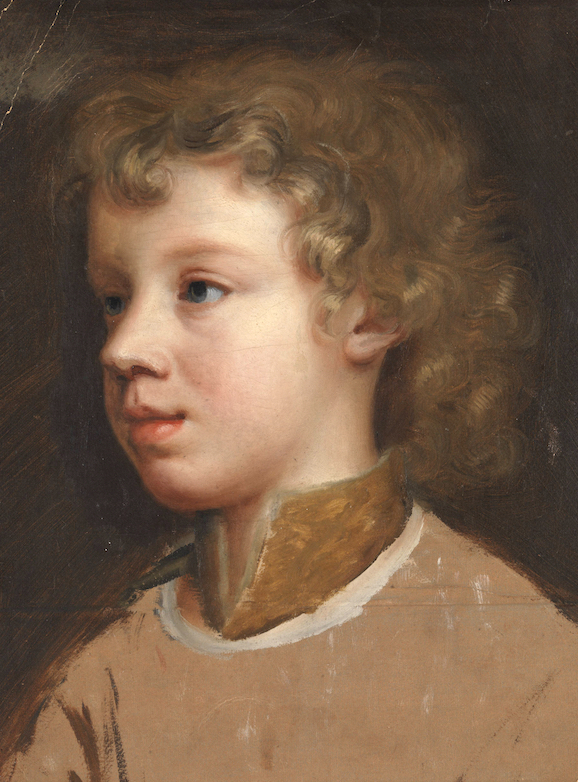 The captions make for chilling reading. Purely factual, they reveal the extent to which even the most successful women were all but erased from history. Take Levina Teerlinc, for example. Henry VIII paid her £40 a year as his court painter, but only a few of her exquisite miniatures can definitely be attributed to her. For instance, one appears in a frame inscribed Nicholas Hilliard.
The captions make for chilling reading. Purely factual, they reveal the extent to which even the most successful women were all but erased from history. Take Levina Teerlinc, for example. Henry VIII paid her £40 a year as his court painter, but only a few of her exquisite miniatures can definitely be attributed to her. For instance, one appears in a frame inscribed Nicholas Hilliard.
Nothing is known about Anne Wemyss and Sarah Broman who were listed in 1658 as professional artists working in Britain. Their colleague Mary Beale, who ran a portrait studio in London, is known through the records kept by her husband Charles, also an artist. Their two children were employed as assistants and models. On show is a delightful preparatory sketch of her son, Bartholomew (pictured above left) made in 1660 for a painting of him as Bacchus.
Beale was able to charge £10 for large pictures, but almost a century later, when Mary Black asked the physician Messenger Monsey to pay for the sympathetic portrait she made of him dressed in a suit of dusty pink velvet, he called her a slut for expecting payment!
Mary Grace exhibited regularly in the 1760s with the Society of Women Artists but the self portrait, in which she fixes us with a confident gaze, is the only painting of hers known to survive.
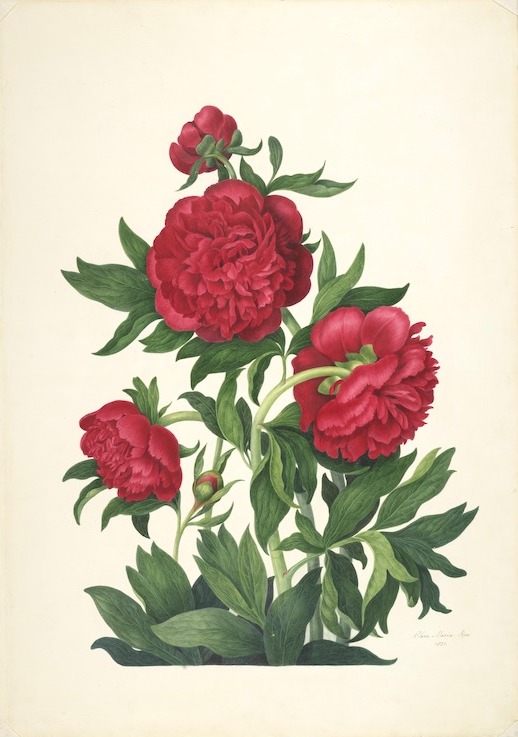 Angelica Kauffman and Mary Moser were founding members of the Royal Academy (RA), set up in 1768 as an art school and a showcase for artists. Commissioned in 1778 to paint the four Elements of Art for the RA’s Council Chamber in Somerset House, Kauffman portrayed Invention as a woman. It was a provocative move since only men were considered capable of creative imagination. (Women might be good at imitating nature, but invention supposedly required masculine genius).
Angelica Kauffman and Mary Moser were founding members of the Royal Academy (RA), set up in 1768 as an art school and a showcase for artists. Commissioned in 1778 to paint the four Elements of Art for the RA’s Council Chamber in Somerset House, Kauffman portrayed Invention as a woman. It was a provocative move since only men were considered capable of creative imagination. (Women might be good at imitating nature, but invention supposedly required masculine genius).
When Kauffman left London for Rome, Maria Cosway inherited her spot as a high profile exhibitor at the RA’s annual exhibitions. When it was shown in 1782, her painting of the Duchess of Devonshire as Cynthia, the Moon Goddess (pictured below left) caused a sensation. Part myth part portrait, the huge canvas shows the Duchess swathed in grey blue clouds and floating in mid air. This fantasy is made plausible by clever composition – she parts the clouds with outstretched hands – and incredibly deft paint handling.
Mary Moser was considered less important because, instead of mythological and history paintings, her preferred subject was flowers. If women excelled at something, inevitably it was deemed inferior, yet the gallery dedicated to flower paintings and botanical Illustrations is absolutely stunning.
Clara Maria Pope and Margaret Meen exhibited sumptuous still lifes of flowers at the RA and also produced illustrations for Kew Gardens and major botanical publications (pictured above right: Peony 1821 by Clara Maria Pope), while Augusta Innes Withers was the Horticultural Society’s official portraitist of fruit. Their water colours are both scientifically accurate and breathtakingly beautiful.
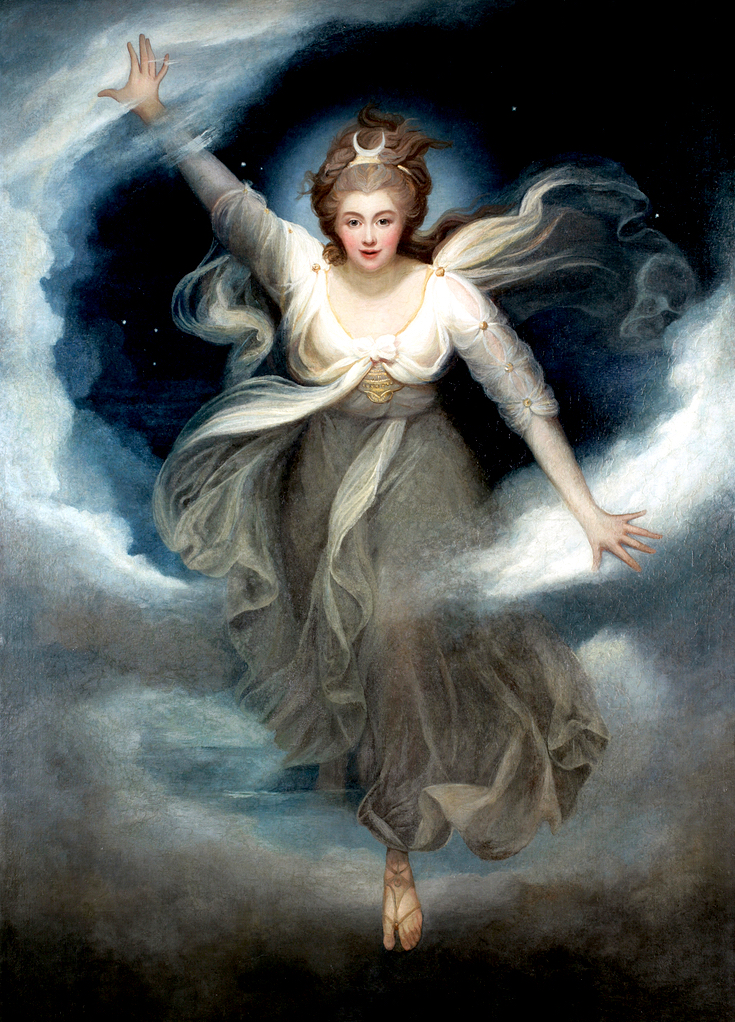
Nearly a century later, Elizabeth Butler was similarly refused membership despite the fact that her painting of soldiers wounded in Crimea (main picture) attracted such huge crowds that police had to stand guard over the pictures hung nearby. She had the last laugh, though, as the copyright for the image sold for £1,200, an astounding sum in 1874. Having held out for over 160 years, the Academicians finally relented in 1936 when membership was conferred on Laura Knight.
The determination, courage and fortitude of these women is amazing. Sarah Boffin was born with no arms or legs yet taught herself to paint and sew using her shoulder and mouth. Women weren’t allowed into art schools so Frances Reynolds, sister of Joshua, the RA’s first President, taught herself to paint by copying her brother’s pictures while working as his housekeeper. Portrait painter, Louise Jopling was the family bread winner yet she found time to set up her own art school in 1887. Laura Herford sneaked her way into the RA Schools in 1860 by signing her work only with her initials, so they thought she was a man.
 The invention of photography gave women an opportunity to compete on a more even playing field, since the new medium wasn’t considered an art form and the stakes were lower. The Photographic Society of London and the Amateur Photography Association both welcomed female members.
The invention of photography gave women an opportunity to compete on a more even playing field, since the new medium wasn’t considered an art form and the stakes were lower. The Photographic Society of London and the Amateur Photography Association both welcomed female members.
Clementina Hawarden’s intimate photographs of women looking in a mirror have the quiet intensity of a Vermeer painting. She and Julia Margaret Cameron are well known, but I’d never heard of Agnes Warburg, who pioneered the use of colour by experimenting with nine different processes, or Olive Edis, Britain’s first female war photographer, whose sepia print of a pulverised landscape details horrifying devastation on the Western front in World War I (pictured below).
The last room contains more familiar names such as Gwen John, Vanessa Bell (pictured above right: Still Life on Corner of a Mantelpiece, 1914 by Vanessa Bell), Helen Saunders and Laura Knight yet these women also deserve to be better known. A Gwen John retrospective would be an especially welcome follow up!
“The exhibition,” says the introductory text, “aims to ensure these artists are not only seen but remembered.” It’s a modest claim for a show that completely transforms one’s view of art history by exposing the extraordinary lies we’ve been fed about the absence of women artists through the centuries.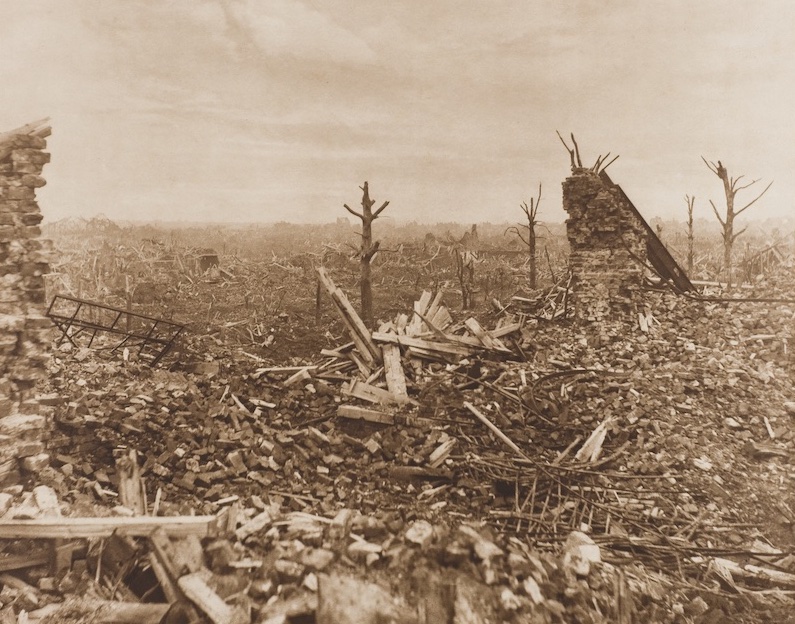 It should be on permanent display as a testament to the contribution made by valiant women, despite men’s best efforts to frustrate their ambitions and, when this failed, to erase successful names from history lest they encourage others to harbour comparable ambitions.
It should be on permanent display as a testament to the contribution made by valiant women, despite men’s best efforts to frustrate their ambitions and, when this failed, to erase successful names from history lest they encourage others to harbour comparable ambitions.
Virginia Woolf succinctly outlined the crucial importance of role models with her observation that “They can because they think they can”. Without this conviction and the example of forerunners to support it, every generation of aspiring women has had to fight the same battles again and again, believing they were the first to dare to dream of developing and using their artistic talents.
- Now You See Us: Women Artists in Britain 1520-1920 at Tate Britain until 13 October
- More visual arts reviews on theartsdesk










![SEX MONEY RACE RELIGION [2016] by Gilbert and George. Installation shot of Gilbert & George 21ST CENTURY PICTURES Hayward Gallery](/sites/default/files/styles/thumbnail_125_x_125_/public/mastimages/Gilbert%20%26%20George_%2021ST%20CENTURY%20PICTURES.%20SEX%20MONEY%20RACE%20RELIGION%20%5B2016%5D.%20Photo_%20Mark%20Blower.%20Courtesy%20of%20the%20Gilbert%20%26%20George%20and%20the%20Hayward%20Gallery._0.jpg?itok=3oW-Y84i)




Add comment